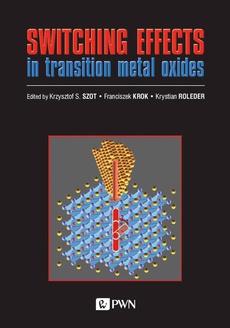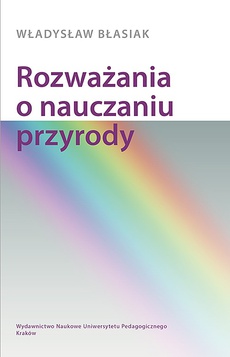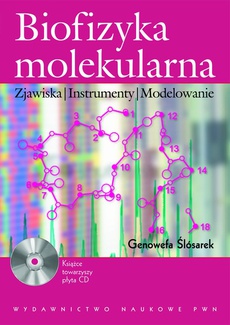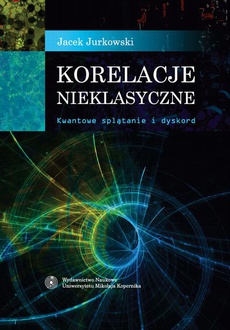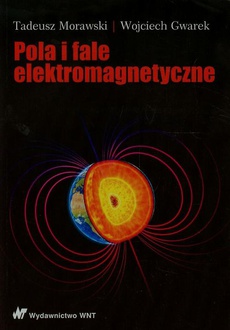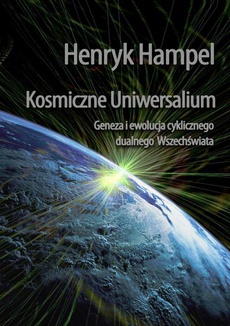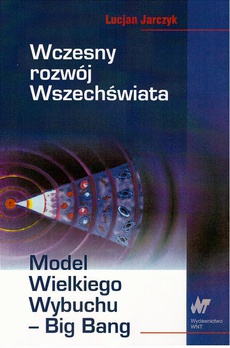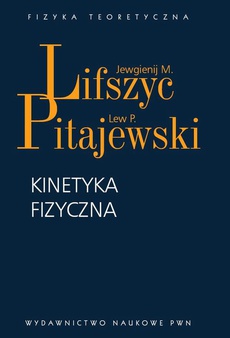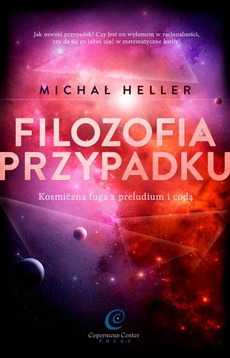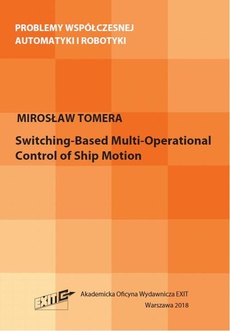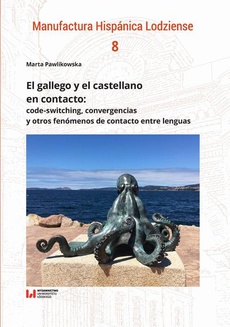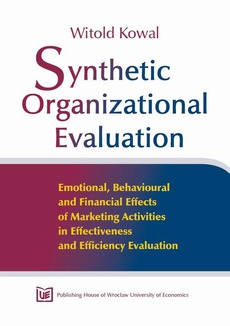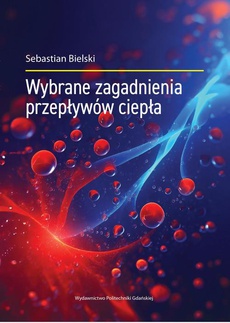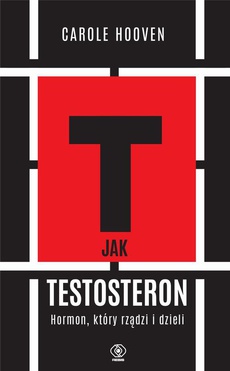POLECAMY
Switching effects
in transition metal oxides
Wydawca:
Format:
epub, mobi, ibuk
The oxides, especially the transition metal oxides, are a most important class of inorganic materials, being enormously interesting for basic research in solid-state physics, surface physics, defect chemistry, electrochemistry, and catalysis, to mention a few. Moreover, the practical application of these materials each year increases tremendously. This ranges from nano-electronics as the main component of resistive switching devices in neuronal networks, micro-electro-mechanical systems known as MEMS, and in ultrasonic transducers with outputs of many kilowatts, to catalysis in industrial processes. This book is a kind of breakthrough in the analysis of the variability of the physical and chemical properties of transition metal oxides. The intention of the authors is not only to link switching to the influence of different macroscopic stimuli on order parameters in ferroics such as spontaneous polarization, spontaneous strain or magnetization, but to show that switching originates at the nanoscale and can be treated as a low-size phenomenon. That is why this book presents surface sensitive methods such as LCAFM, PFM, KPFM, by means of which switching processes are investigated at the nanoscale. In particular, the transport phenomena along filaments inside oxides are described in detail and analyzed through resistive switching mechanisms from the semiconducting to the metallic state.
| Rok wydania | 2021 |
|---|---|
| Liczba stron | 500 |
| Kategoria | Inne |
| Wydawca | Wydawnictwo Naukowe PWN |
| ISBN-13 | 978-83-01-21695-5 |
| Numer wydania | 1 |
| Język publikacji | polski |
| Informacja o sprzedawcy | ePWN sp. z o.o. |
Ciekawe propozycje
Spis treści
| Introduction | 11 |
| 1. An Introduction to the Crystal Structures of Oxide Perovskites | 13 |
| 1.1. Atomic Displacements | 15 |
| 1.2. Octahedral Tilting | 23 |
| 1.3. Distortion Modes | 25 |
| References | 28 |
| 2. Growth of ABO3 and BO2 Crystals | 30 |
| 2.1. Theory of Crystal Growth | 30 |
| 2.1.1. Equilibrium Conditions | 30 |
| 2.2. Phase Diagrams of Model Oxides. Major Challenges in Crystal Growth of Stoichiometric Oxide Crystals | 33 |
| 2.2.1. Gibbs Phase Rule | 33 |
| 2.2.2. Phase Diagrams | 34 |
| 2.2.3. Nonstoichiometric Oxides | 34 |
| 2.3. Techniques of Growth of Selected Binary and Ternary Oxide Crystals | 35 |
| 2.4. Typical Methods for Evaluation of Quality of Oxide Crystals | 40 |
| 2.4.1. Stoichiometric TiO2 | 41 |
| 2.4.2. Perovskite Structure | 41 |
| References | 46 |
| 3. Defect Chemistry in Binary and Ternary Metal Oxides | 51 |
| 3.1. Introduction | 51 |
| 3.2. Imperfect Crystals | 52 |
| 3.3. Quasi-chemical Defect Reactions | 53 |
| 3.4. Types of Point Defects | 54 |
| 3.5. Thermodynamic Approach | 54 |
| 3.6. Nonstoichiometry | 57 |
| 3.7. Aggregations of Point Defects and Extended Defects | 58 |
| 3.8. Ideal Point Defect Model | 61 |
| 3.8.1. Case of Ni1–yO | 61 |
| 3.8.2. Case of BaTiO3–y | 64 |
| 3.8.3. Case of Zirconia-based Materials | 67 |
| 3.8.4. Defect Structure of YSZ | 72 |
| 3.9. Debye-Hückel Defect Model | 73 |
| 3.9.1. Co1–yO Case | 73 |
| 3.10. Cluster Model | 77 |
| 3.10.1. Defect Clustering in the Wustite Phase | 77 |
| 3.11. Crystallographic Shearing | 80 |
| 3.12. Defect Structure of Titanium Dioxide | 81 |
| 3.12.1. Extended Defects in TiO2 | 85 |
| 3.13. Hydrogen Defects | 86 |
| Acknowledgements | 87 |
| References | 87 |
| 4. Self-Polarization of Ferroelectric Thin Films and Its Influence on the Film Properties | 92 |
| 4.1. Introduction | 93 |
| 4.2. Free Energy Functional | 94 |
| 4.3. Renormalized Free Energy and Properties for One Component Polarization P = PZ | 96 |
| 4.4. The Influence of Built-in Electric Field on the Properties of Ferroelectric Thin Films for the Case P = PZ | 99 |
| 4.5. Phase Diagrams with Electret State and Properties for the Case of Three Polarization Components | 103 |
| 4.6. Comparison with Experiment and Summary of Sec. 5 Results | 114 |
| Conclusion | 117 |
| References | 118 |
| 5. Lattice Dynamics of Perovskite Oxides | 120 |
| 5.1. Introduction | 120 |
| 5.2. Early Attempts to Model Ferroelectric Perovskites | 121 |
| 5.3. Polarizability Effects in Perovskites | 124 |
| 5.4. The Polarizability Model for Perovskites | 126 |
| 5.5. Applications of the Model | 131 |
| 5.6. Precursor Effects to the Phase Transitions | 137 |
| Conclusions | 146 |
| References | 147 |
| 6. Metrology and Measurement Techniques 151 | |
| 6.1. Electrical Properties of Nanoscale Solids | 151 |
| 6.1.1. Measurement of Electrical and Magnetic Material Properties | 152 |
| 6.1.2. The Piezoelectric Effect | 163 |
| 6.2. Design of Measurement Setups | 166 |
| 6.2.1. General Considerations | 166 |
| 6.2.2. Active Amplifier Circuits | 169 |
| 6.2.3. Measurement Methods for Ferroelectric Properties | 172 |
| 6.2.4. Laser Interferometers | 183 |
| References | 188 |
| 7. Multiferroics 190 | |
| 7.1. Abstract | 190 |
| 7.2. Introduction | 190 |
| 7.3. A Brief History of Magnetoelectrics and Multiferroics | 191 |
| 7.4. Symmetries and Orderings in Multiferroics | 192 |
| 7.5. Theory of Magnetoelectric Coupling in Multiferroics | 193 |
| 7.6. Magnetoelectric Multiferroics | 200 |
| Acknowledgements | 218 |
| References | 218 |
| 8. Electronic Correlations and Metal-Insulator Transitions | 223 |
| 8.1. Introduction: The Meaning of Localization – Delocalization | |
| Transitions in Solids with Examples | 223 |
| 8.1.1. Crystallization of Liquid 3He as Mott-Hubbard Transition | 223 |
| 8.1.2. Localization-Delocalization Transition of Ultracold Atoms | 225 |
| 8.1.3. Metal-Insulator Transition in Doped V2O3 | 226 |
| 8.2. Elementary Approach to the Metal-Insulator (Mott-Hubbard) Transitions | 228 |
| 8.2.1. Normal metal as a Landau Fermi liquid: basic characteristics | 228 |
| 8.2.2. Mott-Wigner Criterion of Localization | 230 |
| 8.2.3. 8.2.3 Localization on the Lattice: Hubbard Model | 232 |
| 8.2.4. Quantitative Discussion of the Metal-Insulator Transition | 233 |
| 8.2.5. Quasiparticle Representation of Correlated-Electron System and the Phase Diagram | 236 |
| 8.2.6. Mott-Hubbard Localization in Correlated Nanoscopic Systems | 241 |
| 8.3. Concluding Remarks | 244 |
| Acknowledgment | 244 |
| References | 244 |
| 9. Nature of the Insulator-Metal Transition in Transition Metal Oxides Induced by Chemical Defects – Deviation from Stoichiometry and Electrochemical Alkaline Intercalation | 245 |
| 9.1. Insulator-Metal Transition in Transition Metal Oxides Induced by Deviation from Stoichiometry | 247 |
| 9.2. Insulator-Metal Transition in Transition Metal Oxides Induced by Electrochemical Alkaline Intercalation/Deintercalation | 272 |
| 9.2.1. LixCoO2 | 276 |
| 9.2.2. NaxCoO2-y | 285 |
| Acknowledgements | 295 |
| References | 296 |
| 10. Structural Transformation of the SrTiO3 Surface Region due to Electric Fields at Ambient Temperature 299 | |
| 10.1. Modifications and Equilibrium of the SrTiO3 Structure | 300 |
| 10.1.1. Compositional Changes: the Quasi-binary System SrO–TiO2 | 300 |
| 10.1.2. Stability of SrO(SrTiO3)n Ruddlesden-Popper Phases | 303 |
| 10.1.3. A Look at Symmetry and Property Tensors | 304 |
| 10.1.4. Chemical Modifications Beyond the Ternary Composition | 306 |
| 10.2. Electric-field Induced Ionic Transport and Anisotropy in SrTiO3 | 307 |
| 10.2.1. Electroformation | 308 |
| 10.2.2. Redistribution of Ionic Species | 310 |
| 10.3. Evidence for Structural Transformations and Related Models | 312 |
| 10.3.1. Structural Transitions due to Application of an Electric Field | 312 |
| 10.3.2. The Occurence of Ruddlesden-Popper Phases | 313 |
| 10.3.3. The Migration-Induced Field-Stabilized Polar (MFP) Phase | 314 |
| 10.4. Modification of SrTiO3 Properties and Related Applications | 317 |
| 10.4.1. Oxygen Vacancies and Conductivity | 318 |
| 10.4.2. Mechanical Properties | 319 |
| 10.4.3. Magnetism | 321 |
| 10.4.4. Pyroelectricity | 321 |
| 10.4.5. Piezoelectricity | 323 |
| 10.4.6. Resistive Switching | 325 |
| 10.4.7. All-Solid-State All-in-One Battery | 326 |
| 10.4.8. Further Applications | 326 |
| 10.5. Conclusion | 327 |
| Acknowledgment | 328 |
| References | 329 |
| 11. Chemical Transformation of SrTiO3 Surface Region Exposed to High Temperature and Other Factors | 336 |
| 11.1. Introduction | 336 |
| 11.2. Investigated Crystals | 339 |
| 11.3. Possible Surface Reconstructions of STO | 340 |
| 11.4. Methods of Surface Studies | 341 |
| 11.5. Thermal Treatment | 341 |
| 11.6. Surface Modification upon Vacuum and Exposure to X-Rays and Electron Beam | 348 |
| 11.7. Ion Sputtering | 351 |
| 11.8. Deposition of Metals | 354 |
| 11.9. Mechanical Stress and Defects | 355 |
| Summary | 356 |
| References | 357 |
| 12. Chemical Transformation of TiO2 Surface Region Exposed to High Temperature and Different Chemical Activity of Oxygen | 359 |
| Acknowledgements | 375 |
| References | 375 |
| 13. From Electroformation to Resistive Switching in Single Crystals of Strontium Titanate: How SrTiO3 Can Be Transformed into a Metallic State Using Electrical Stimuli | 378 |
| 13.1. Introduction | 378 |
| 13.2. Resistive Switching – General Information | 381 |
| 13.3. Some Theoretical Considerations | 386 |
| 13.3.1. Methods for the Calculation of the Electronic Structure | 388 |
| 13.3.2. Trends Observed from DFT Calculations | 393 |
| 13.4. Electroforming of Non-conducting (Insulating) SrTiO3 Crystals | 394 |
| 13.4.1. Electrical Characterization During Electroformation | 394 |
| 13.4.2. Oxygen Evolution During Electroformation | 399 |
| 13.4.3. Spatial Inhomogeneity of the Electroformation Process and Filamentary Structures | 402 |
| 13.5. Model | 410 |
| References | 417 |
| 14. Crystallographic Structure, Electronic Structure, and Chemical Composition on the Nanoscale: Important Role of the SPM, LEED, Photoemission Investigations for the Analysis of the Crystal Geometry, Electronic Structure and Diffusion Phenomena on the Surface of Model Oxides | 420 |
| Acknowledgements | 437 |
| References | 437 |
| 15. Investigations of Local Thermal Properties by SThM Microscopy | 439 |
| 15.1. Scanning Thermal Microscopy: Principle, Equipment, Operation Modes | 440 |
| 15.2. Thermal Imaging: Temperature and Conductivity Contrast Measurements | 445 |
| 15.3. Quantitative Thermal Measurements with SThM Equipment – Potentialities and Limitations | 448 |
| 15.4. Methods for Improvements of Sensitivity and Stability of Thermal Measurements Using Batch Fabricated Thermal Probes | 453 |
| 15.5. Determination of the Thermal Conductivity of Submicron Layers on Thick Substrates | 458 |
| 15.6. Application of Qualitative and Quantitative SThM Measurements in Investigation of Perovskites (Thin Films, Bicrystals) | 460 |
| Acknowledgements | 462 |
| References | 463 |
| 16. Studying the Local Redox Processes on Transition Metal Oxides Surfaces Using Kelvin Probe Force Microscopy | 466 |
| 16.1. Introduction | 466 |
| 16.2. Principles of Kelvin Probe Force Microscopy | 468 |
| 16.2.1. Basics of KPFM Operation | 468 |
| 16.2.2. Forces in Atomic Force Microscopy | 469 |
| 16.2.3. Technical Realization of KPFM | 472 |
| 16.2.4. Limits of Resolutions in KPFM | 474 |
| 16.3. Local Surface Potential of Oxide Metal Surfaces upon Reduction and Oxidation Processes | 478 |
| 16.3.1. Titanium Dioxide TiO2(110) Surface | 478 |
| 16.3.2. Strontium Titanate SrTiO3(100) Surface | 484 |
| 16.4. Summary | 491 |
| Acknowledgements | 492 |
| References | 492 |

